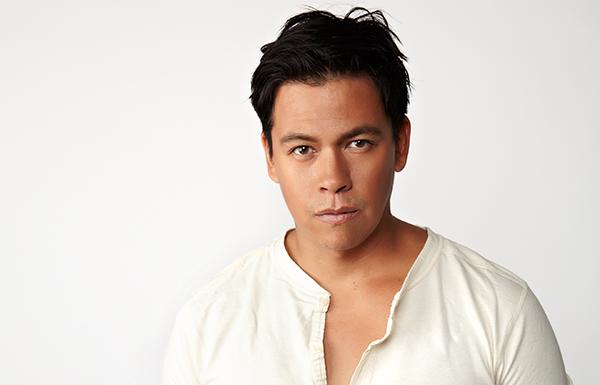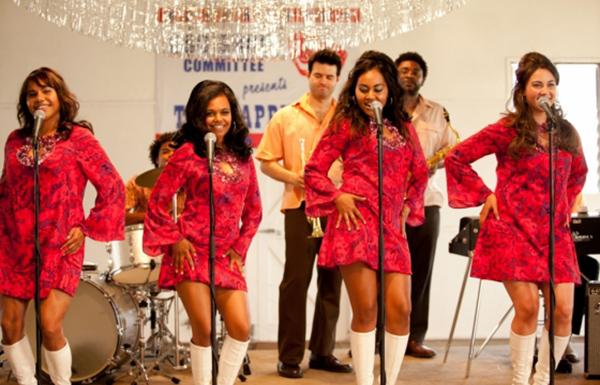By Eisa Ulen, Indian Country Today Media Network
To create a healthcare ad for the National Congress of American Indians (NCAI), Passamaquoddy-owned public relations, marketing and advertising company BlackBear Communications looked through a pile of Polaroid pictures of ordinary, everyday Native Americans. One of the images was of a beautiful girl, Ta’Shon Rain Little Light, who had been misdiagnosed with depression at the tender age of 5. This child’s real condition was cancer, and Ta’Shon’s young life was lost because of the poor healthcare she received at a local clinic. She became the cover image of a stunning BlackBear-produced NCAI campaign to improve healthcare options for Native people, people like Ta’Shon, whose lives are too often cut short because of the socio-economic conditions that limit their access to quality medical care.

According to Elizabeth Neptune, BlackBear’s public health specialist and former councilor of the Passamaquoddy Tribe of Indian Township, Maine, the BlackBear NIH campaigns “will range the spectrum of health initiatives, from anti-obesity efforts to reminders to schedule prostrate exams. On any campaign that BlackBear is selected to participate in, BlackBear will provide a number of different services to ensure cultural sensitivity and message penetration.”
BlackBear is a Tribal owned venture between the Passamaquoddy Tribe of Indian Township and a team of public relations, advertising and marketing professionals, and the firm’s reach through this NIH partnership will extend throughout Indian country.
Neptune says BlackBear will “micro-target” the hundreds of diverse tribes throughout the United States. The firm, Neptune explains, understands that a person might self-identify as Native American and Choctaw, or Alaskan Native and Haida, and BlackBear “hopes to speak with the target audience in their own voice. Just as one wouldn’t tell a Texan to ‘fer git a bout it’ or invite a New Yorker to hoedown, BlackBear does not take a one-size-fits-all approach to communications.”
With health disparities and income inequality plaguing Native people, this great diversity within Indian country demands that the communications firm in place to help save lives understand the full range of Native experiences. “The prevailing image of Native Americans,” Neptune says, “is of destitute reservations in the backlands of America. While roughly half of all Native Americans live in rural reservations, millions of Native Americans live in urban settings.”
Neptune says that Native Americans living in cities struggle with the same issues of drugs, violence, and poverty facing other urban Americans, but “these problems run deeper and with much greater impact in the Native American/Alaskan Native population. When a national politician talks about the horrors of over 10 percent unemployment in the African American [community], imagine the difficulty for a rural tribal council member who faces over 50 percent unemployment amongst their people. Studies have proven that socio-economics play a major part in health and healthcare management.”
The major health disparities impacting Native health, Neptune says, are diabetes and substance abuse. Education through public communication helps identify substance abusers who need help, the best places for them to go to get help, and the training addicts and their family members can get to learn how to help improve health outcomes. Likewise, Neptune says, through public education, ordinary people can identify a pattern of family diabetes, learn how to talk to a nutrition expert, and begin to think about ways to cook healthier meals to have a positive impact on family wellness.
Neptune says her background as a public health specialist gives her a distinctive perspective within the BlackBear Communications team. “My particular experience in direct care and the whole health care system has placed me in the unique position to talk about those challenges faced in Indian country with authority. But the issues that confront Native American communities are many. Communities are learning, talking and tackling the problem with internal and external resources is the only way we will ever see improvement. There are also opportunities if the Native American communities want to fight for them in the realm of public debate. Whether it is a local, state or nationa initiative, Native Americans will only be heard if they speak up. BlackBear, we hope, will be more than a communications firm to reach Indian country. We want it to be a megaphone for Native Americans to address the issues and opportunities important to them.”
Perhaps BlackBear’s new partnership with NIH will help more people who deserve better healthcare information and access—and prevent tragic, avoidable loss of life, life as precious as young Ta’Shon Rain Little Light.
Read more at http://indiancountrytodaymedianetwork.com/2013/03/18/passamaquoddys-blackbear-communications-launches-campaign-improve-healthcare-options



















